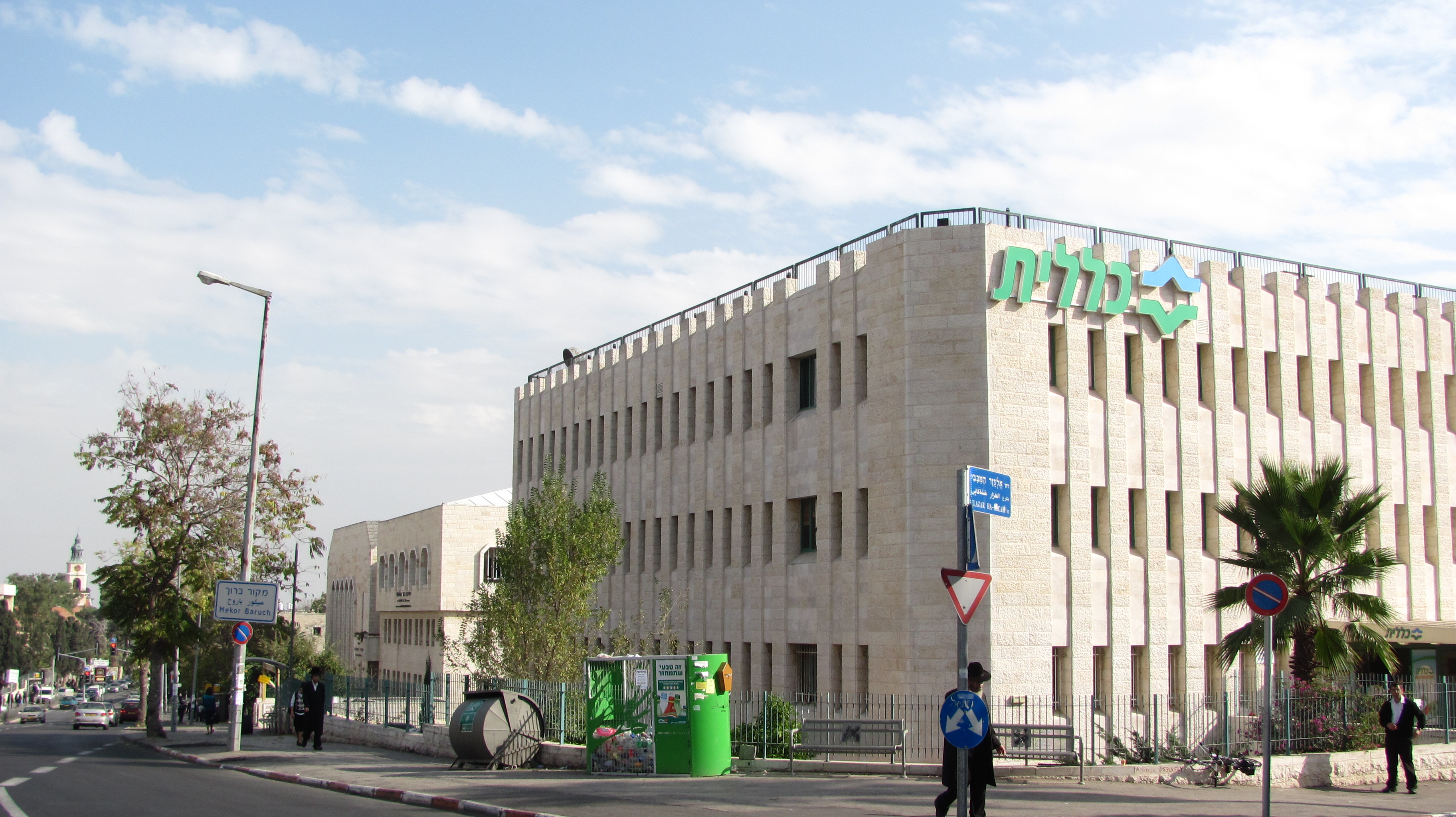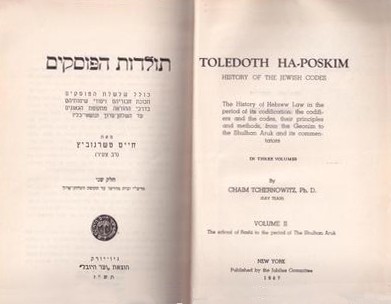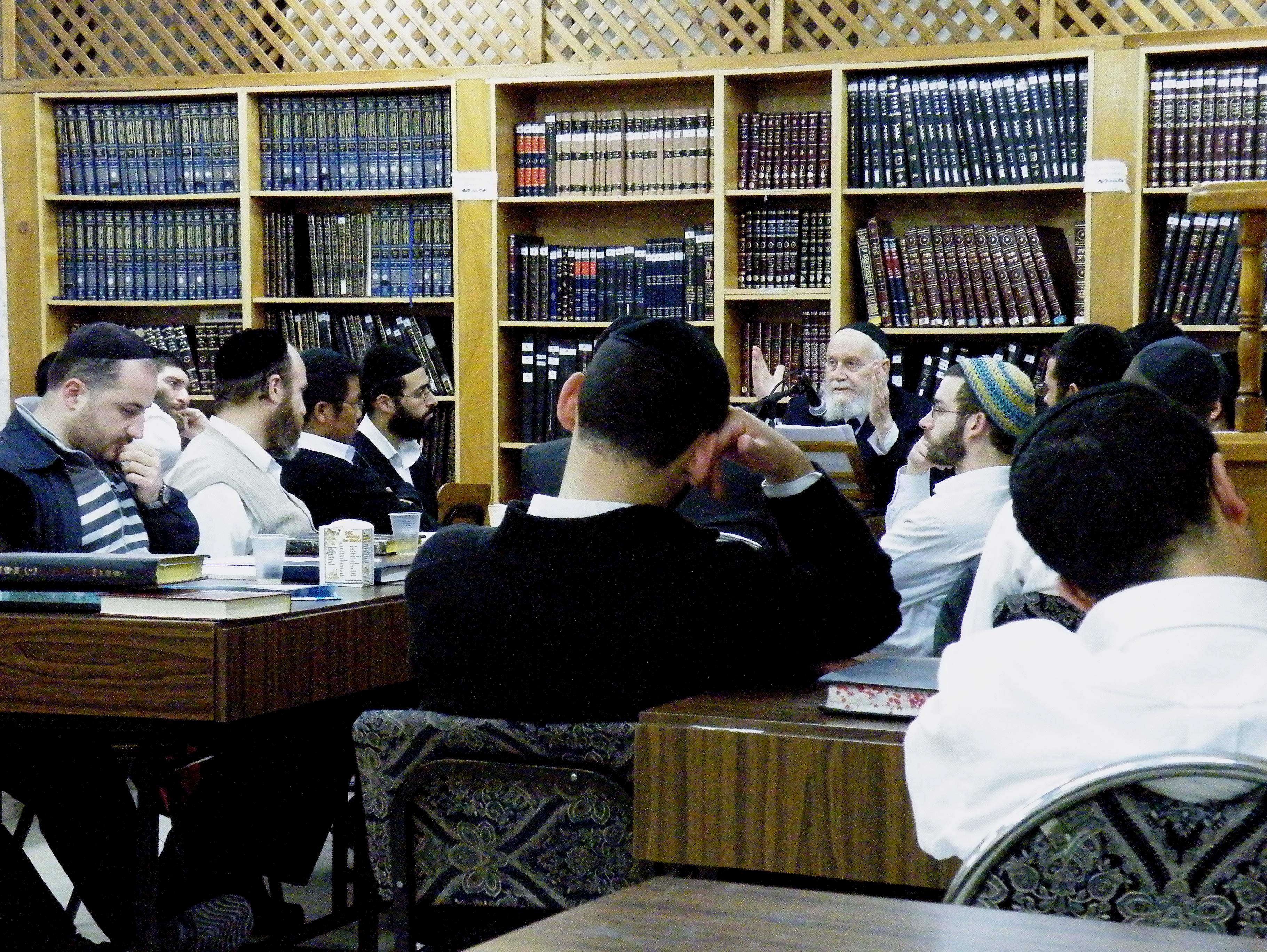|
Shaar Hashamayim Yeshiva
Shaar Hashamayim Yeshiva ( he, ישיבת שער השמים, lit., "Gate of Heaven") is an Ashkenazi yeshiva in Jerusalem dedicated to the study of the kabbalistic teachings of the Arizal (Rabbi Isaac Luria). It is famous for its student body of advanced kabbalists — many of them roshei yeshiva and Torah scholars — as well as beginning and intermediate scholars who study both the revealed and concealed Torah. Name The name of the yeshiva was taken from the Torah passage in which Jacob dreams of a ladder stretching from earth to heaven. After he awakens from his dream, Jacob exclaims, "This is none other than the House of God, and this is the Gate of Heaven (''Shaar Hashamayim'')!" (Genesis 28:19). Origins The impetus to found Shaar Hashamayim Yeshiva came from a dream experienced by two noteworthy Jerusalem rabbis on the same night in 1906. Rabbi Chaim Yehuda Leib Auerbach, author of ''Chacham Lev'', awoke one night from a strange dream and went back to sleep, only to ... [...More Info...] [...Related Items...] OR: [Wikipedia] [Google] [Baidu] |
Mekor Baruch
Mekor Baruch ( he, מקור ברוך, lit., "blessed source" or "fountain of blessing") also spelled Makor Baruch, is a neighborhood in Jerusalem. The neighborhood is bordered by Malkhei Yisrael Street to the north, Sarei Yisrael Street to the west, Jaffa Road to the south, and the Zikhron Moshe neighborhood to the east. History Mekor Baruch was founded in 1924 on land purchased from the Schneller Orphanage by the Jerusalem-American Land Company, a consortium of Jerusalem and American investors. The name of the neighborhood was based on the words ''Yehi mekorkha baruch'' ("Let your fountain be blessed") in Proverbs 5:18. Differing sources place the beneficiary of the name as Boris (Baruch) Hershenov, one of the investors, or Baruch Aharanoff, an American philanthropist. The consortium mapped out 207 lots, but due to the economic downturn of 1927–1930, construction did not get underway until the 1930s, by which time the consortium had been liquidated. To the southeast lay a ... [...More Info...] [...Related Items...] OR: [Wikipedia] [Google] [Baidu] |
Old City (Jerusalem)
The Old City of Jerusalem ( he, הָעִיר הָעַתִּיקָה, translit=ha-ir ha-atiqah; ar, البلدة القديمة, translit=al-Balda al-Qadimah; ) is a walled area in East Jerusalem. The Old City is traditionally divided into four uneven quarters, namely: the Muslim Quarter, the Christian Quarter, the Armenian Quarter, and the Jewish Quarter. A fifth area, the Temple Mount, known to Muslims as the ''Haram al-Sharif'', is home to the Dome of the Rock, Al-Aqsa Mosque and was once the site of two Jewish Temples. The current designations were introduced in the 19th century. The Old City's current walls and city gates were built by the Ottoman Empire from 1535 to 1542 under Suleiman the Magnificent. The Old City is home to several sites of key importance and holiness to the three major Abrahamic religions: the Temple Mount and Western Wall for Judaism, the Church of the Holy Sepulchre for Christianity, and the Dome of the Rock and al-Aqsa Mosque for Islam. ... [...More Info...] [...Related Items...] OR: [Wikipedia] [Google] [Baidu] |
Chief Rabbi
Chief Rabbi ( he, רב ראשי ''Rav Rashi'') is a title given in several countries to the recognized religious leader of that country's Jewish community, or to a rabbinic leader appointed by the local secular authorities. Since 1911, through a capitulation by Ben-Zion Meir Hai Uziel, Israel has had two chief rabbis, one Ashkenazi and one Sephardi. Cities with large Jewish communities may also have their own chief rabbis; this is especially the case in Israel but has also been past practice in major Jewish centers in Europe prior to the Holocaust. North American cities rarely have chief rabbis. One exception however is Montreal, with two—one for the Ashkenazi community, the other for the Sephardi. Jewish law provides no scriptural or Talmudic support for the post of a "chief rabbi." The office, however, is said by many to find its precedent in the religio-political authority figures of Jewish antiquity (e.g., kings, high priests, patriarches, exilarchs and ''gaonim''). ... [...More Info...] [...Related Items...] OR: [Wikipedia] [Google] [Baidu] |
Beth Din
A beit din ( he, בית דין, Bet Din, house of judgment, , Ashkenazic: ''beis din'', plural: batei din) is a rabbinical court of Judaism. In ancient times, it was the building block of the legal system in the Biblical Land of Israel. Today, it is invested with legal powers in a number of religious matters (''din Torah'', "matter of litigation", plural ''dinei Torah'') both in Israel and in Jewish communities in the Diaspora, where its judgments hold varying degrees of authority (depending upon the jurisdiction and subject matter) in matters specifically related to Jewish religious life. History Rabbinical commentators point out that the first suggestion in the Torah that the ruler divest his legal powers and delegate his power of judgment to lower courts was made by Jethro to Moses (Exodus ). This situation was formalised later when God gave the explicit command to "establish judges and officers in your gates" ( Deuteronomy ). There were three types of courts ( Mishnah, ... [...More Info...] [...Related Items...] OR: [Wikipedia] [Google] [Baidu] |
Tzvi Pesach Frank
Tzvi Pesach Frank (20 January 1873 – 10 December 1960) (Hebrew: הרב צבי פסח פרנק) was a renowned halachic scholar and served as Chief Rabbi of Jerusalem for several decades (1936-1960). Biography Frank was born in Kovno, Vilna Governorate, the son of Rabbi Yehuda Leib Frank and Malka Silman, who were active in the Hovevei Zion organization in Kovno. He studied in Lithuanian yeshivas, learning under Rabbi Eliezer Gordon, among others. In 1892, he emigrated to Eretz Yisrael with his brother Tanhum, his sister Zippora and his first cousin, Rabbi Shmuel Hillel Shenker. His parents arrived in 1893. Tzvi Pesach continued his studies in yeshivas in Jerusalem. His father was one of the founders of Hadera. In 1907, Frank was appointed dayan in the Beth Din of the Edah HaChareidis headed by Rabbi Shmuel Salant, the Chief Rabbi of Jerusalem. Frank served on this Beth Din for nearly 60 years, eventually becoming ''Av Beit Din'' (head of the rabbinical court) and Rav o ... [...More Info...] [...Related Items...] OR: [Wikipedia] [Google] [Baidu] |
Shalom Sharabi
Sar Shalom Sharabi ( he, שר שלום מזרחי דידיע שרעבי), also known as the Rashash, the Shemesh or Ribbi Shalom Mizraḥi deyedi`a Sharabi (1720–1777), was a Yemenite Rabbi, Halachist, Chazzan and Kabbalist. In later life, he became the Rosh Yeshiva of Bet El Yeshiva in the Old City of Jerusalem. His daughter married Rabbi Hayyim Abraham Gagin of Jerusalem, making him the great-great-grandfather of Shem Tob Gaguine, the "Keter Shem Tob." His son was Yitzhak Mizrahi Sharabi and his grandson was Chief Rabbi Chaim Abraham Gagin. Biography Sar Shalom Sharabi was born in Jewish Sharab, Yemen. He moved to the Land of Israel, then under Ottoman rule, in fulfilment of a vow. On his way he stayed in India, Baghdad and Damascus. In Damascus, he was involved in a dispute of Halacha over the minimum olive size kezayit of matzah that one should eat at the Pesach Seder. In Israel, he made a strong impression on the local rabbinic sages, and is frequently mentione ... [...More Info...] [...Related Items...] OR: [Wikipedia] [Google] [Baidu] |
Aggadah
Aggadah ( he, ''ʾAggāḏā'' or ''Haggāḏā''; Jewish Babylonian Aramaic: אַגָּדְתָא ''ʾAggāḏəṯāʾ''; "tales, fairytale, lore") is the non-legalistic exegesis which appears in the classical rabbinic literature of Judaism, particularly the Talmud and Midrash. In general, Aggadah is a compendium of rabbinic texts that incorporates folklore, historical anecdotes, moral exhortations, and practical advice in various spheres, from business to medicine. Etymology The Hebrew word ''haggadah'' (הַגָּדָה) is derived from the Hebrew root נגד, meaning "declare, make known, expound", also known from the common Hebrew verb להגיד.Berachyahu Lifshitz, "Aggadah Versus Haggadah : Towards a More Precise Understanding of the Distinction", ''Diné Yisrael'' 24 (2007): page 23 (English section). The majority scholarly opinion is that the Hebrew word ''aggadah'' (אַגָּדָה) and corresponding Aramaic ''aggadta'' (אַגָּדְתָא) are variants of ''h ... [...More Info...] [...Related Items...] OR: [Wikipedia] [Google] [Baidu] |
Posek
In Halakha, Jewish law, a ''Posek'' ( he, פוסק , pl. ''poskim'', ) is a legal scholar who determines the position of ''halakha'', the Judaism, Jewish religious laws derived from the Torah, written and Oral Torah in cases of Jewish law where previous authorities are inconclusive, or in those situations where no clear ''halakhic'' precedent exists. The decision of a posek is known as a ''psak halakha'' ("ruling of law"; pl. ''piskei halakha'') or simply a "psak". ''Piskei halakha'' are generally recorded in the responsa literature. Orthodox Judaism Poskim play an integral role in Orthodox Judaism. * Generally, each community will regard one of its ''poskim'' as its ''Posek HaDor'' ("Posek of the present Generation"). * Most rely on the rav in their community (in Hasidic communities, sometimes the rebbe) or the leading posek. Poskim will generally not overrule a specific law unless based on an earlier authority: a posek will generally extend a law to new situations but w ... [...More Info...] [...Related Items...] OR: [Wikipedia] [Google] [Baidu] |
Shiur (Torah)
Shiur (, , lit. ''amount'', pl. shiurim ) is a lecture on any Torah topic, such as Gemara, Mishnah, Halakha (Jewish law), Tanakh (Bible), etc. History The Hebrew term שיעור ("designated amount") came to refer to a portion of Judaic text arranged for study on a particular occasion, such as a yartzeit, the dedication of a new home, or the evening of a holiday, and then to a public reading and explanation of the same. The act of teaching and studying these texts at the designated time was known in Yiddish as ''schiur lernen''. These shiurim would be attended by all classes of people; it was traditional for learned attendees to engage the lecturer in continuous discussion, and for the larger lay audience to listen intently. Concurrently, the word came to refer to the daily study quotient for students of a yeshiva, and then to the lecture given thereon. Akiva Eger, for example,would not miss learning a single ''shiur'' with the yeshiva. His ''shiurim'' with them we ... [...More Info...] [...Related Items...] OR: [Wikipedia] [Google] [Baidu] |
Chazal
Chazal or Ḥazal ( he, חז״ל), an acronym for the Hebrew "Ḥakhameinu Zikhronam Liv'rakha" (, "Our Sages, may their memory be blessed"), refers to all Jewish sages of the Mishna, Tosefta and Talmud eras, spanning from the times of the final 300 years of the Second Temple of Jerusalem until the 7th century CE, or 250 BCE – 625 CE. Rabbinical eras; eras of the Halakha Chazal are generally divided according to their era and the main writing done in that era: * '' Soferim'' ("scribes"): Sages from before the era of Ezra the scribe until the '' Zugot'' era, including the men of the Great Assembly. This era stretches from the ''Matan Torah'' ("giving of the Law"; Moses receiving the Torah on Biblical Mount Sinai), to the ''Halakha'' ("traditions") era, including the times of Simeon the Just. * '' Zugot'' ("pairs"): Five pairs (''zugot'') of sages from consecutive generations, who lived during a period of around 100 years towards the end ... [...More Info...] [...Related Items...] OR: [Wikipedia] [Google] [Baidu] |
Mussar Movement
The Musar movement (also Mussar movement) is a Jewish ethical, educational and cultural movement that developed in 19th century Lithuania, particularly among Orthodox Lithuanian Jews. The Hebrew term (), is adopted from the Book of Proverbs (1:2) describing moral conduct, instruction or discipline, educating oneself on how one should act in an appropriate manner. The term was used by the Musar movement to convey the teachings regarding ethical and spiritual paths. The Musar movement made significant contributions to Musar literature and Jewish ethics. The movement has been revived in the 21st century amongst Jews of all denominations, particularly in the United States. Origin The Musar movement arose among non- Hasidic Orthodox Lithuanian Jews as a response to the social changes brought about by the Enlightenment, and the corresponding Haskalah movement among many European Jews. In this period of history anti-Semitism, the assimilation of many Jews into Christianity, and ... [...More Info...] [...Related Items...] OR: [Wikipedia] [Google] [Baidu] |
Halakha
''Halakha'' (; he, הֲלָכָה, ), also transliterated as ''halacha'', ''halakhah'', and ''halocho'' ( ), is the collective body of Jewish religious laws which is derived from the written and Oral Torah. Halakha is based on biblical commandments ('' mitzvot''), subsequent Talmudic and rabbinic laws, and the customs and traditions which were compiled in the many books such as the ''Shulchan Aruch''. ''Halakha'' is often translated as "Jewish law", although a more literal translation of it might be "the way to behave" or "the way of walking". The word is derived from the root which means "to behave" (also "to go" or "to walk"). ''Halakha'' not only guides religious practices and beliefs, it also guides numerous aspects of day-to-day life. Historically, in the Jewish diaspora, ''halakha'' served many Jewish communities as an enforceable avenue of law – both civil and religious, since no differentiation of them exists in classical Judaism. Since the Jewish Enlightenment ... [...More Info...] [...Related Items...] OR: [Wikipedia] [Google] [Baidu] |







